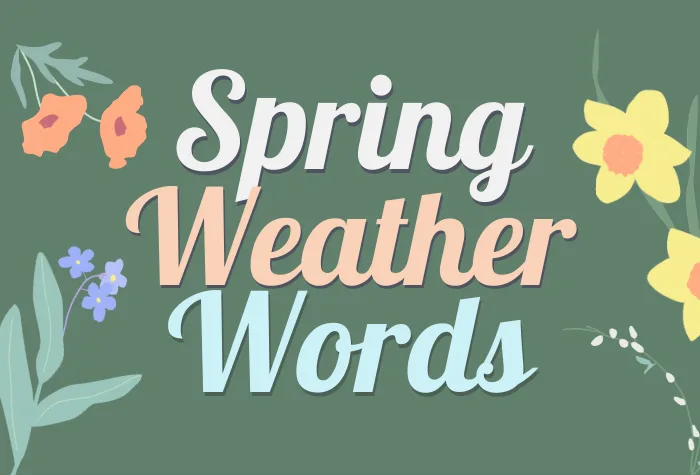
Spring weather words you need to know
Start of the new season with a refresh on your weather terminology.
Now that our spring forecast is in full swing, we thought it would be a good time to review some of the terms you'll be hearing this season.
Enjoy!
1. Breezy: Breezy is defined by the National Weather Service as a period with sustained winds between 24 and 40 kilometres per hour.
2. Bloom: Longer days in spring means plants get more exposure to light, helping them grow quicker. A rise in temperatures helps seeds germinate, triggering flowers and buds to bloom.
3. Derecho: Defined by the National Weather Service as a widespread and long-lived straight-line wind storm that forms a group of fast-moving, severe thunderstorms, there are special criteria for a system to be defined as a derecho. To qualify, the swath of wind damage must extend 400 km, and contain wind gusts of 93 km/h or greater for the majority of its length. Derecho is Spanish for "direct" or "straight ahead."
4. Drizzle: Defined as light rain falling in small drops, drizzle can feel refreshing on a humid day.
5. Flood: Floods occur when a body of water overcomes its confines, typically spilling over onto normally-dry land. If the conditions are right, melting snowpack can contribute to spring flooding. Ice that built up in rivers over the winter may become dislodged and start to move with the melt.
6. Ice jam: As temperatures warm, ice that has accumulated in water starts to break apart. When broken river ice backs up in a narrow channel, it is referred to as an ice jam. Ice jams are often associated with flooding in the late winter and early spring.
7. Jet stream: The National Weather Service defines jet stream as narrow bands of strong winds in the upper levels of the atmosphere. The jet stream's flow generally goes from west to east and follows the boundary between cold and warm air masses.
8. Low Pressure: A low-pressure system circulates in a counter-clockwise motion, forcing air upwards. Rising air causes condensation, cloud formation, and precipitation. Low-pressure systems are also called storm systems because they bring inclement weather.
Visit our Complete Guide to Spring 2022 for an in-depth look at the Spring Forecast, tips to plan for it and much more!
9. Snowpack: We tend to associate snow with winter, but snowpack is something you’ll hear about in spring as well. It is defined is an accumulation of snowfall that remains in place until warmer weather arrives.
10. Squall line: A continuous or intermittent line of active thunderstorms that forms along, or before, a cold front.
11. Thaw: Thaw occurs when temperatures rise, and snow and ice melting begins. A spring thaw can saturate roadways, making them more vulnerable to cracking.
12. Thunderstorm: A thunderstorm is a cloud that bears rain and produces lighting. These are dangerous storms. Associated risks include tornadoes, strong winds, hail, and flash floods.
13. Tornado: A tornado is a violently rotating column of air extending from the base of a thunderstorm to the surface. Tornadoes can form at any time of year but are most common in the spring and summer.
Video production: April Walker.











